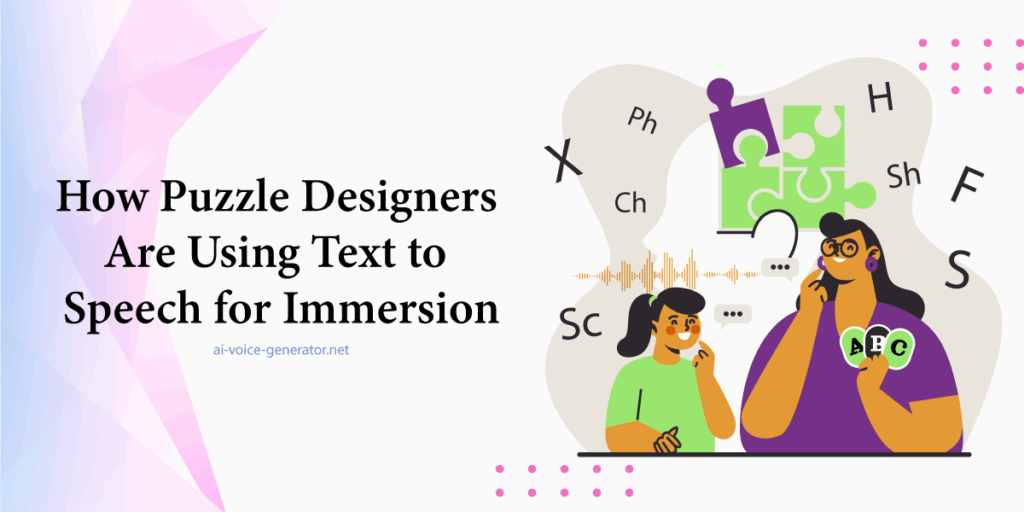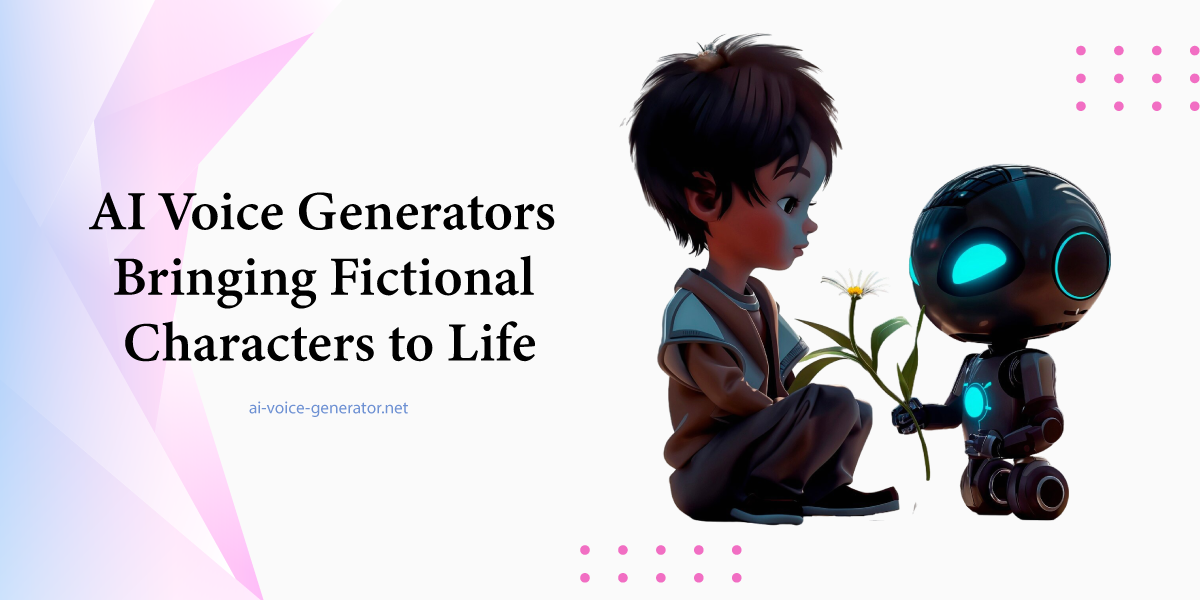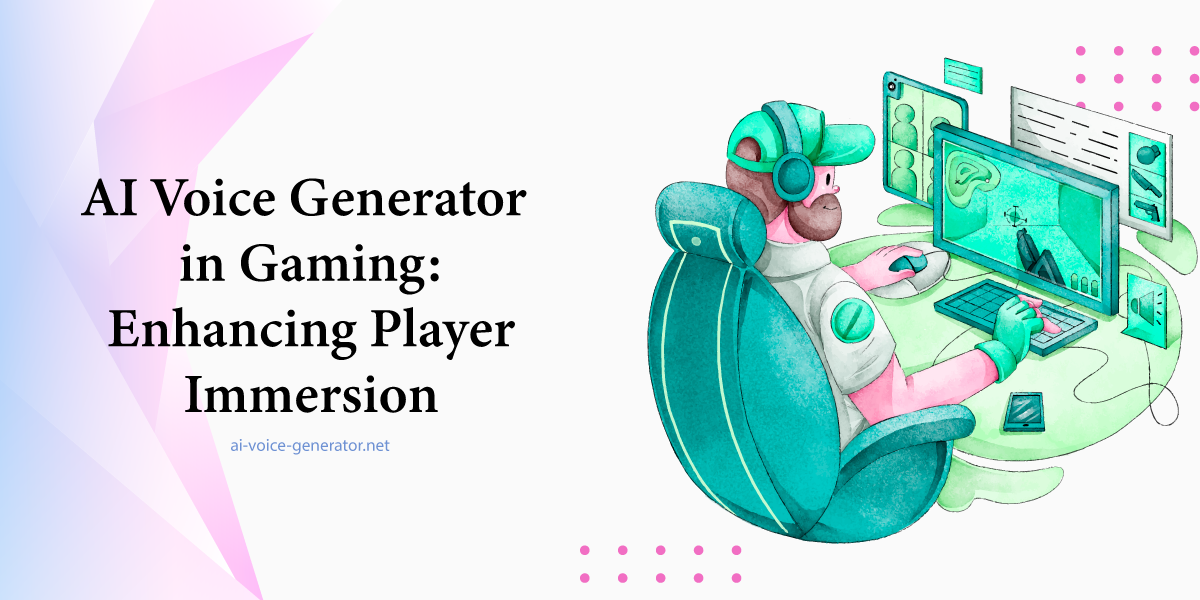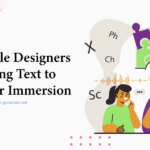
How Puzzle Designers Are Using Text to Speech for Immersion
Designing immersive puzzle experiences has always been an intricate art. From escape rooms to mobile mystery games, creators constantly search for ways to make their environments more lifelike and mentally stimulating. Among the most intriguing tools emerging in this creative arena is text to speech, a once-niche technology that now fuels some of the most memorable interactive games.
It’s not just about adding voices to puzzles anymore. The use of text to speech free solutions allows even hobbyists and indie designers to integrate narration, clues, or dramatic reveals — all without hiring voice actors or building complex sound systems.
Let’s explore how this technology is quietly becoming a staple in the toolkit of puzzle creators around the world.
Why Puzzle Designers Are Turning to AI Voice Tools
The days of static, text-only clues are fading in many puzzle-based experiences. With the availability of AI text to speech platforms, even small-scale creators are adding rich layers of realism to their games. Whether designing a murder mystery night, a digital scavenger hunt, or a custom tabletop RPG, creators can generate custom voices instantly.
AI-generated voices help replace robotic TTS with nuanced, emotionally engaging tones. This offers puzzle solvers a more authentic sense of narrative. A cryptic voice might whisper, “The key is under the mirror,” while another speaks in riddles. These additions not only immerse players but also make the replay value significantly higher.
Bringing Puzzles to Life with Voice Narration
Immersion is one of the most powerful aspects of any puzzle game, and text to audio free tools play a key role in building that atmosphere. A puzzle is more than a set of clues — it’s an experience. And just like lighting or props, voice plays a critical part.
By layering voice prompts, game creators can simulate characters, deliver mission objectives, or even trigger time-based events. Many escape room owners use TTS technology to automate parts of their experience. Instead of speaking themselves, they queue up a chilling AI voice to issue the first challenge, setting the mood instantly.
Designing Non-Linear Games with Dynamic Audio
Puzzle-based games often require non-linear thinking. Adding text to speech online options allows game builders to react to player input. For example, if a team solves a code early, they might receive a unique message through a TTS-generated audio file. This creates a sense of dynamic storytelling without rewriting the entire game.
In some digital games, developers use AI voices to provide alternate instructions based on difficulty settings. This makes the gameplay experience more adaptive, which is crucial for replayable content. And because AI voice generators are easily updatable, tweaking the narrative doesn’t require a new recording session.
How Game Narratives Benefit from AI Voice
Narrative design is the soul of a good puzzle. The moment the players step into the game, they want a story that carries them. With free online text to speech services, creators can quickly voice out different parts of their narrative without breaking the budget.
Let’s say a player uncovers a mysterious diary. Instead of reading the text, the diary could speak to them in a weary voice, created via AI. This changes the tone entirely, delivering impact without the need for a narrator or actor. It’s not just more immersive — it’s also more accessible.
Personalization and Replayability with Voice Tools
One of the lesser-discussed strengths of text to voice generator platforms is personalization. Puzzle designers can tweak voices for every playthrough. For instance, a birthday party puzzle could include custom greetings or name mentions, making it uniquely tailored.
Replayability increases when players know they’ll hear new variations in voice or message structure. Developers have even started including “secret voices” that trigger under certain conditions — all made possible with flexible AI voice systems.
Above all, these voice tools allow creators to build layered experiences that evolve each time they’re played.
Building Multi-Character Games Without a Voice Cast
Hiring voice actors for every character in a puzzle game isn’t feasible for most indie creators. But with a text to speech generator, one person can generate dozens of distinct character voices with varying accents, tones, and speech patterns.
This has become a go-to solution for ARG (alternate reality game) developers and remote game designers. Whether you need a British villain, a robotic assistant, or a Southern sheriff, a single tool can provide the voice variety to support your world-building.
For creators looking to explore such tools, AI Voice Generator is a versatile option that makes this kind of dynamic audio storytelling incredibly accessible.
Improving Accessibility in Puzzle Design
Accessibility is often overlooked in puzzle design. Many games rely on visual cues, printed text, or written instructions. However, text to speech voices allow creators to make their games accessible to people with visual impairments or learning differences.
Imagine a puzzle box that recites its clues aloud. Or a mobile game that delivers every narrative element in both audio and text. By incorporating TTS elements, designers are not only enhancing their games but also widening their audience.
And since many AI voice tools can translate and speak in multiple languages, it’s now possible to offer multilingual support without the need for dubbing.
Remote Puzzle Games and Online Escape Rooms
Online puzzle games and virtual escape rooms exploded in popularity in recent years. Much of their success lies in clever use of tools like text to speech. When players are scattered across different cities or even countries, voice becomes the glue that connects their shared experience.
TTS allows these games to run entirely through digital interfaces — where characters speak to players, and clues are narrated in real time. It gives players a feeling of presence that plain text on a screen simply can’t offer.
Enhancing Physical Puzzle Props with AI Speech
Tangible puzzles — like those in escape rooms or mystery boxes — benefit greatly from embedded voice tech. Designers now embed devices into props that play AI text to speech clips when triggered. A sculpture might “speak” when moved, or a locked box may recite a riddle upon being unlocked.
With compact speakers and easy-to-program microcontrollers, TTS audio becomes part of the hardware. Creators can produce custom audio with zero voice acting budget — and with voices that are consistent, clean, and editable.
Reducing Production Costs Without Sacrificing Quality
Quality is often compromised when budgets are tight. Fortunately, text to audio free solutions offer a way to deliver high-end audio experiences without the financial strain. Designers don’t need microphones, soundproof rooms, or post-production skills. They just type, preview, and download.
This ease of use dramatically speeds up development cycles. It also reduces the number of tools needed, streamlining the workflow for creators juggling multiple roles — writer, designer, sound editor, and producer.
Creative Puzzle Concepts Inspired by Voice Tech
The evolution of voice tech has inspired entirely new puzzle formats. Developers are building games where the goal is to decipher accents, reverse-engineer corrupted voice messages, or interact with a synthetic character that responds dynamically.
These aren’t just gimmicks. They’re smart design innovations made possible by text to speech online tools. They add depth and personality to games, making them memorable beyond the clues and locks.
The Role of Voice in Portable Puzzle Boxes
Portable puzzle boxes and tabletop mystery games are gaining traction as a genre. These physical products often include QR codes or NFC tags that link to free online text to speech audio experiences.
Players scan a tag and hear a voice say, “The key is not what you think.” Suddenly, the game shifts from visual-only to multi-sensory, engaging the mind in new ways. These enhancements are cost-effective and endlessly customizable with AI tools.
Voice Timing and Script Control for Designers
Unlike traditional voiceovers, AI voices give full script control to the designer. You can fine-tune every pause, pitch, and inflection. This lets creators synchronize voice with physical triggers or game timers.
By using a text to voice generator, puzzle designers can test and adjust dialogue instantly. Whether it’s speeding up a hint or slowing down a dramatic reveal, they don’t need to re-record — just retype.
Final Thoughts: TTS Tools Are Quietly Reshaping Puzzle Design
While the buzz often surrounds big AI applications in media and content creation, it’s in the quieter corners — like puzzle design — where text to speech generator tools are making a genuine impact. They’re not replacing creativity; they’re amplifying it.
The future of immersive, narrative-driven puzzle experiences is being quietly reshaped by these tools. They’re giving creators more control, players deeper engagement, and games a layer of life that text alone can’t deliver.
FAQs
You can use TTS tools to create character voices or timed clues triggered during gameplay.
Yes, especially with modern AI models that offer expressive, natural-sounding speech.
Many tools offer pitch, tone, and speed controls for full customization.
Not necessarily. Most tools just require typing and downloading the voice clips.
Yes, audio files can be stored and triggered with simple electronics.




